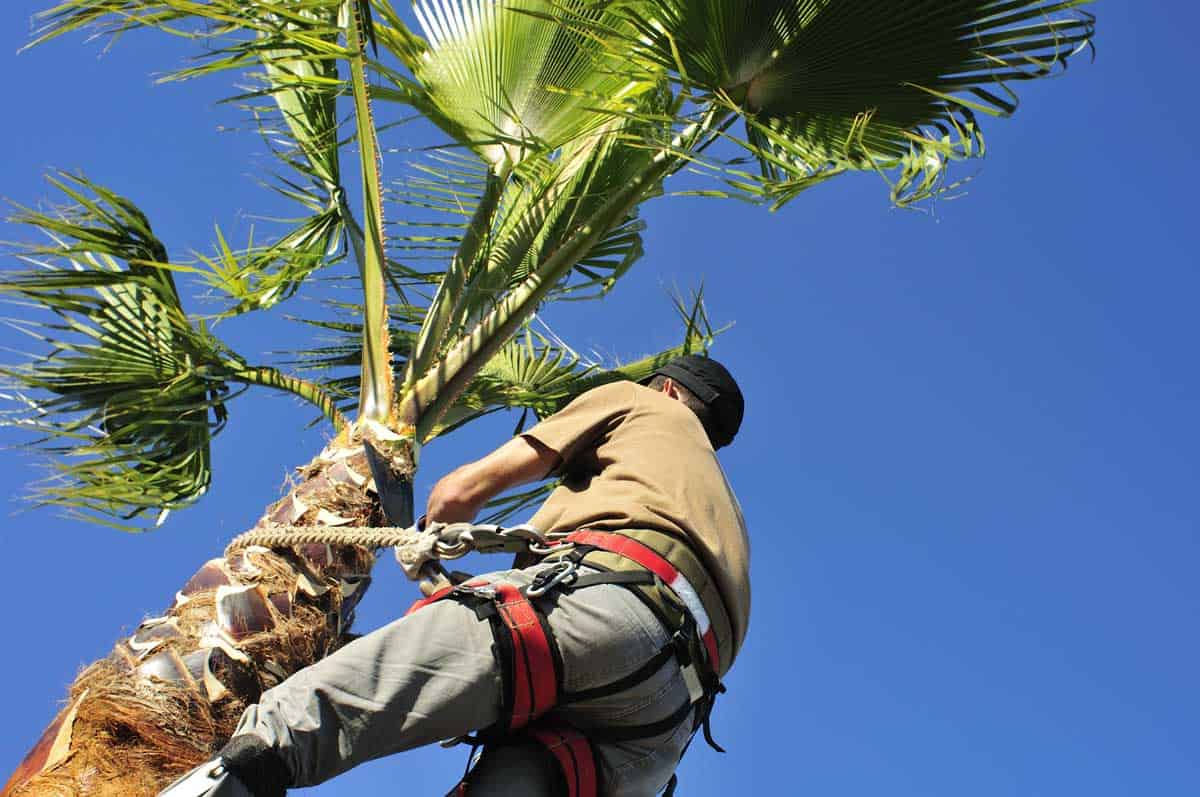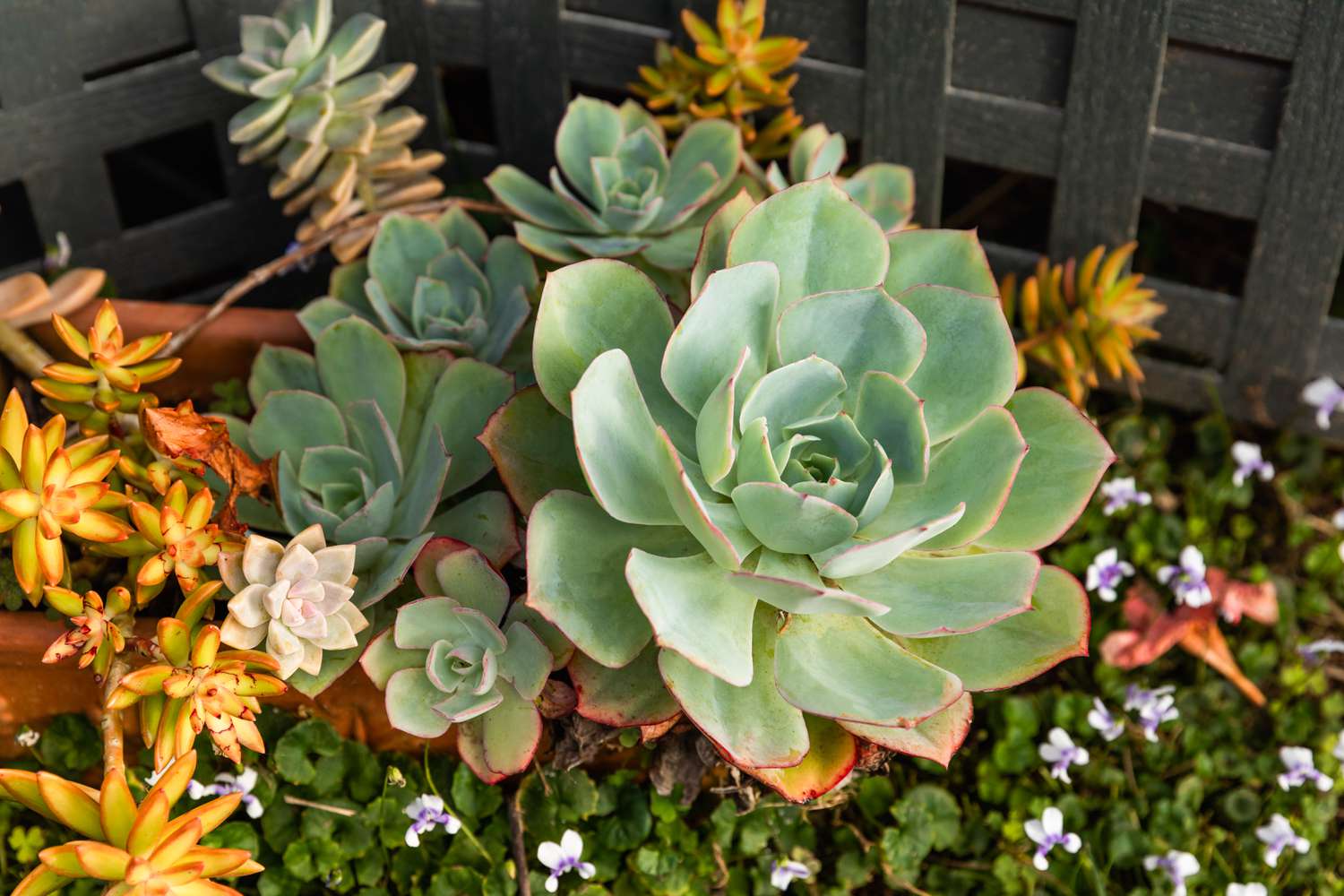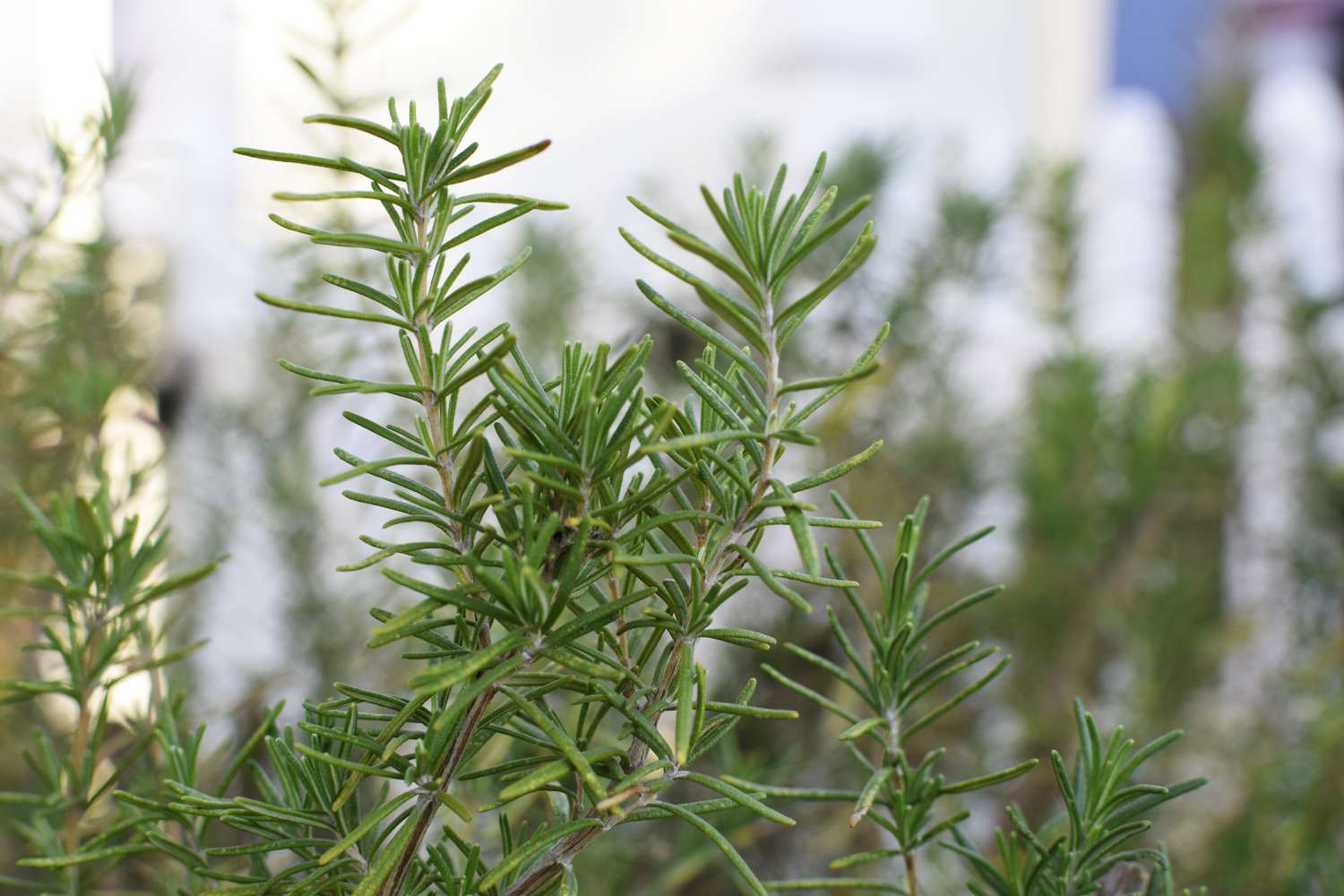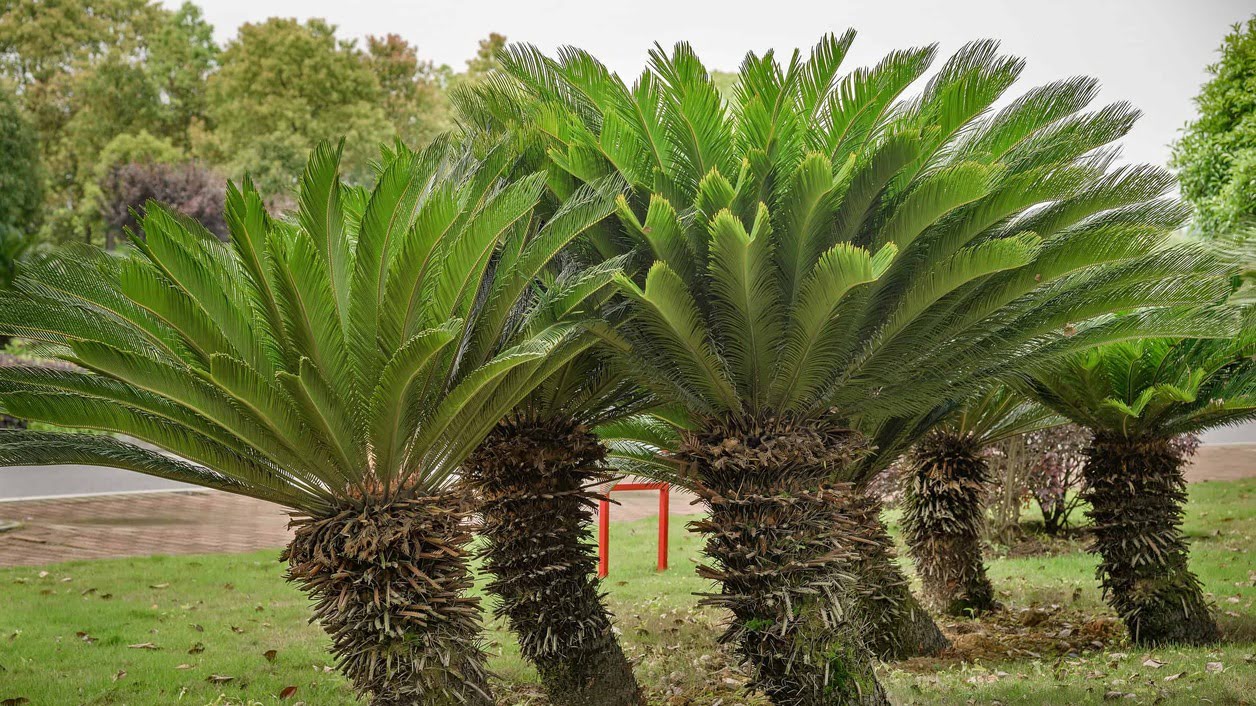Home>Gardening News and Trends>Latest News>How Long Does Palm Trees Live
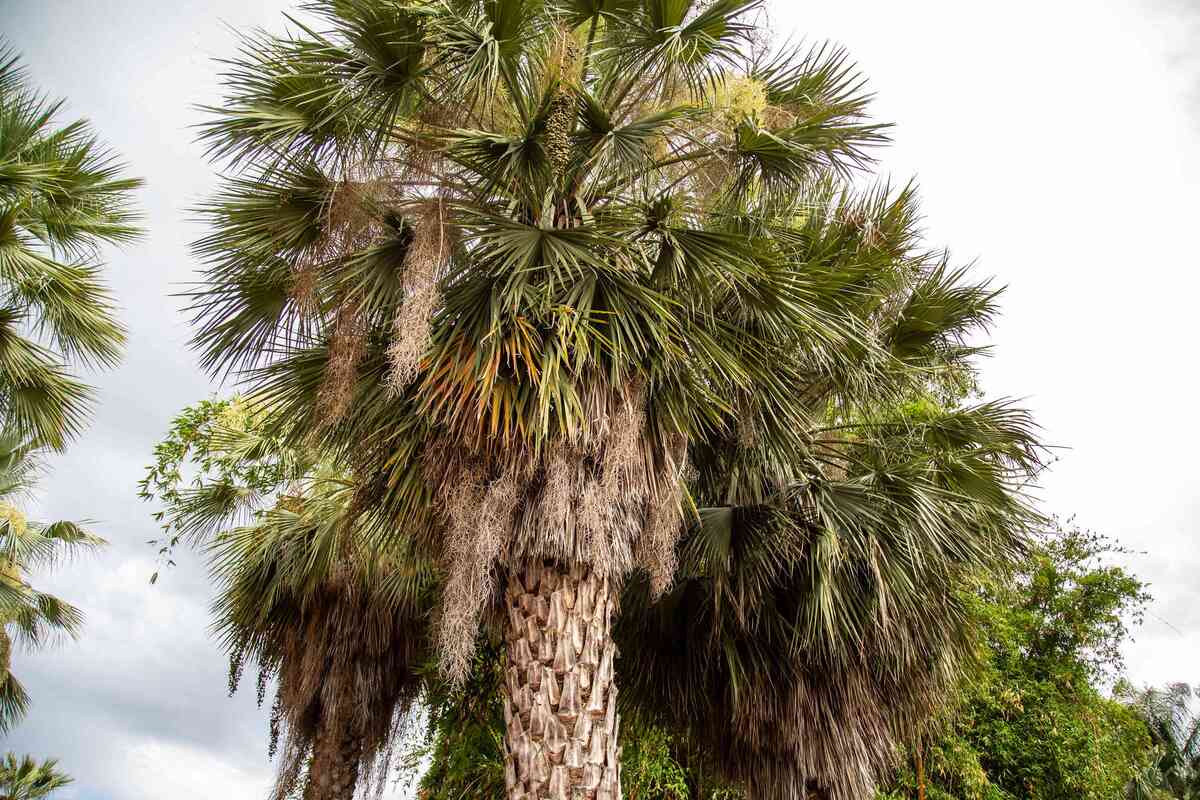

Latest News
How Long Does Palm Trees Live
Modified: January 22, 2024
Stay informed with the latest news on how long palm trees live. Discover the factors that influence their lifespan and learn how to care for them to promote longevity.
(Many of the links in this article redirect to a specific reviewed product. Your purchase of these products through affiliate links helps to generate commission for Chicagolandgardening.com, at no extra cost. Learn more)
Table of Contents
Introduction
Palm trees are iconic symbols of tropical and subtropical regions, known for their graceful appearance and ability to thrive in warm climates. These majestic trees can add a touch of paradise to any landscape. However, have you ever wondered about the lifespan of palm trees? How long do these beautiful trees actually live?
The lifespan of palm trees can vary greatly depending on several factors, including species, environmental conditions, and proper care. While some palm trees may live for several decades, others can live for centuries. Understanding the factors that affect the lifespan of palm trees and how to care for them can help ensure that these stunning trees live a long and healthy life.
In this article, we will explore the factors that influence the lifespan of palm trees, delve into the average lifespans of different palm tree species, discuss the signs of an aging palm tree, and provide tips on how to increase the lifespan of these majestic trees. Whether you are a palm tree enthusiast or simply curious about the natural world, this article will provide valuable insights into the longevity of palm trees.
Factors Affecting the Lifespan of Palm Trees
The lifespan of palm trees can be influenced by various factors that determine their overall health and wellbeing. Understanding these factors can help you create the ideal conditions for your palm tree to thrive and live a long and fruitful life. Here are some key factors that play a vital role in determining the lifespan of palm trees:
- Species: Different palm tree species have different lifespans. Some species are known to live for centuries, while others have a shorter lifespan. For example, the Giant Mountain Palm (Jubaea chilensis) is one of the longest-living palm trees, with a lifespan of up to 300 years, while the Queen Palm (Syagrus romanzoffiana) typically lives for 15 to 20 years.
- Environmental Conditions: Palm trees thrive in warm and tropical climates. They require an adequate amount of sunlight, water, and proper drainage to flourish. Extreme weather conditions, such as prolonged periods of cold temperatures or drought, can significantly impact the lifespan of palm trees. Additionally, exposure to strong winds, salt spray, and pollution can also affect their health.
- Soil Quality: The quality of the soil in which a palm tree is planted plays a crucial role in its lifespan. Palm trees prefer well-draining soil that is rich in organic matter. Soil that is too compacted or lacking in essential nutrients can hinder the tree’s growth and overall health. Regular soil testing and necessary amendments can help create an optimal growing environment for palm trees.
- Care and Maintenance: Proper care and maintenance practices are essential for the longevity of palm trees. Regular watering, pruning, and fertilization are crucial to provide the necessary nutrients and ensure healthy growth. It is important to follow recommended guidelines for watering, as overwatering or underwatering can both be detrimental to palm trees. Regular removal of dead fronds and inspection for pests and diseases is also necessary.
- Pest and Disease Control: Palm trees are susceptible to various pests and diseases that can impact their lifespan. Common pests include palm weevils, aphids, and whiteflies, while diseases such as Fusarium wilt and lethal yellowing can be lethal to palm trees. Regular inspection and treatment by professionals can help prevent and control pest and disease infestations.
By considering these factors and providing the appropriate conditions, care, and maintenance, you can significantly extend the lifespan of your palm trees. In the next section, we will explore the average lifespans of different palm tree species, offering insights into the longevity you can expect from different varieties of palm trees.
Average Lifespan of Different Palm Tree Species
Palm trees exhibit a wide range of lifespans, with different species varying in their longevity. While some palm trees can live for centuries, others have a relatively shorter lifespan. Here are some examples of palm tree species and their average lifespans:
- Coconut Palm (Cocos nucifera): The iconic coconut palm is known for its versatile uses and can live for up to 80-90 years. These palms thrive in tropical regions and are prized for their delicious coconuts and lush appearance.
- California Fan Palm (Washingtonia filifera): Commonly found in California and other parts of the southwestern United States, the California Fan Palm has an average lifespan of 80-90 years. These palms can tolerate a variety of growing conditions and are known for their tall and slender trunks.
- Palmetto Palm (Sabal palmetto): Native to the southeastern United States, the Palmetto Palm can live for 80-100 years. These palms are known for their fan-shaped fronds and are often used in landscaping to create a tropical ambiance.
- Date Palm (Phoenix dactylifera): Date Palms are famous for their sweet and nutritious fruit. These palms have an average lifespan of 100-150 years. They are commonly found in the Middle East and other arid regions.
- Mexican Fan Palm (Washingtonia robusta): With its slender trunk and graceful fronds, the Mexican Fan Palm is a popular choice for landscaping. These palms can live for 80-100 years and are commonly found in Mexico and parts of the southwestern United States.
- Canary Island Date Palm (Phoenix canariensis): Featuring a striking appearance with a thick trunk and large, arching fronds, the Canary Island Date Palm can live for 100-150 years. These palms are native to the Canary Islands and are commonly cultivated in Mediterranean climates.
- Jubaea Palm (Jubaea chilensis): The Jubaea Palm is one of the longest-living palm trees, with an average lifespan of 200-300 years. These palms are native to Chile and have a stout trunk and feathery fronds.
These are just a few examples of palm tree species and their average lifespans. It is important to note that these figures are average estimates, and the lifespan of individual trees can vary depending on various factors and how well they are cared for.
In the next section, we will explore the signs of an aging palm tree, which can help you identify when your palm tree may require extra attention and care.
Signs of an Aging Palm Tree
Like any living organism, palm trees also show signs of aging as they mature. It is important to be able to recognize these signs to ensure proper care and maintenance for the tree. Here are some common indicators that your palm tree is aging:
- Slow Growth: As palm trees age, their growth rate tends to slow down. If you notice that your palm tree is not growing as quickly as it used to, it may be a sign of aging.
- Thinning Canopy: An aging palm tree may have a thinner canopy with fewer fronds. The fronds may also appear smaller and less vibrant in color.
- Brittle or Brown Fronds: As palm trees age, the fronds may become dry, brittle, or turn brown. This is a natural part of the aging process, but excessive browning or brittleness could indicate underlying issues.
- Visible Trunk Damage: The trunk of an aging palm tree may show signs of damage, such as cracks, peeling bark, or hollow sections. These issues can weaken the tree and make it more susceptible to pests and diseases.
- Reduced Fruit Production: Some palm tree species produce fruit as they mature. However, as they age, the production of fruit may decrease or cease altogether.
- Stunted or Deformed Growth: An aging palm tree may exhibit stunted or deformed growth, with irregular growth patterns or misshapen trunk or fronds.
- Root Issues: As palm trees age, their root systems can become less efficient in absorbing nutrients and water from the soil. Root rot or root damage can occur, leading to a decline in the overall health of the tree.
It is important to note that while these signs may indicate an aging palm tree, they can also be symptoms of other issues such as pests, diseases, or environmental stress. Regular inspection by a professional arborist can help determine the exact cause and provide appropriate treatments and care.
Now that we have explored the signs of an aging palm tree, let’s move on to the next section, where we will provide tips on how to increase the lifespan of palm trees.
Tips for Increasing the Lifespan of Palm Trees
To ensure that your palm trees live a long and healthy life, it is important to provide them with the proper care and attention they require. Here are some valuable tips for increasing the lifespan of palm trees:
- Choose the right species: Select palm tree species that are well-suited to your climate and growing conditions. By choosing species that naturally thrive in your area, you can increase the chances of long-term survival.
- Plant in the right location: Ensure your palm tree is planted in a location that receives adequate sunlight and has well-draining soil. Avoid areas prone to strong winds or excessive shade, as this can stress the tree and impact its lifespan.
- Provide regular watering: Palm trees require regular watering, especially during the hot and dry months. However, it is important to strike a balance and avoid overwatering, as this can lead to root rot. Consult with a professional arborist to determine the appropriate watering schedule for your specific palm tree species.
- Implement proper fertilization: Palm trees benefit from regular fertilization to ensure they receive essential nutrients. Use a slow-release palm fertilizer or consult with an expert to determine the best fertilization schedule and type for your palm tree species.
- Prune dead or damaged fronds: Regularly inspect your palm tree for dead or damaged fronds and remove them. This helps improve the overall health and appearance of the tree and reduces the risk of pests and diseases.
- Protect from pests and diseases: Palm trees can be susceptible to various pests and diseases. Regularly inspect your palm tree for signs of infestation or disease, and promptly address any issues. Consult with a professional arborist for recommended pest control measures and disease prevention strategies.
- Improve soil quality: Conduct regular soil testing to assess the health of the soil. If necessary, amend the soil with organic matter or appropriate soil amendments to improve drainage and nutrient content.
- Provide wind protection: Strong winds can be particularly damaging to palm trees. Install windbreaks or create a barrier using materials such as burlap or shade cloth to protect your palm tree from excessive wind exposure.
- Monitor and adjust care as needed: Regularly monitor the overall health of your palm tree and make adjustments to its care and maintenance routine as necessary. Pay attention to any changes or signs of distress, and seek professional advice if needed.
By implementing these tips and providing proper care, you can significantly increase the lifespan of your palm trees. Remember that palm trees are living organisms, and consistent care and attention are vital to their longevity and well-being.
Conclusion
Palm trees are not just beautiful additions to your landscape; they are remarkable living organisms that can live for varying lengths of time. Understanding the factors that affect the lifespan of palm trees and implementing proper care techniques can significantly increase their longevity.
We have explored the factors that influence the lifespan of palm trees, including species, environmental conditions, soil quality, and care practices. Different palm tree species have different average lifespans, ranging from a few decades to several centuries. It is important to choose the right species for your climate and provide the optimal growing conditions for your palm trees.
As palm trees age, they exhibit signs of aging such as slow growth, thinning canopy, brittle fronds, trunk damage, reduced fruit production, and stunted growth. Recognizing these signs can help you identify when your palm tree needs extra attention and care.
To increase the lifespan of your palm trees, follow these essential tips: choose the right species for your climate, plant them in suitable locations, provide regular watering and fertilization, prune dead fronds, protect from pests and diseases, improve soil quality, provide wind protection, and monitor their health and make adjustments as needed.
Remember to consult with a professional arborist for expert advice and guidance specific to your palm tree species and location. By implementing these tips and providing proper care, you can ensure that your palm trees flourish and live a long and healthy life, adding beauty and serenity to your surroundings for years to come.
